Key Highlights
- Historic logistics cost reduction to 7.97% of GDP in 2023-24, down from 8.84% in 2022-23, officially lower than China’s 14.4%
- World Bank LPI ranking surge from 44th (2018) to 38th (2023) among 139 countries, with 22nd position in International Shipments category
- World-class port efficiency with 0.9-day turnaround time outperforming USA (1.5 days), Germany (1.3 days), and Australia (1.7 days)
- PM Gati Shakti success with 200+ projects worth ₹5,496 crore recommended and 330+ projects mapped across states
- ULIP digital transformation facilitating over 160 crore digital transactions across 30+ systems and tracking 75 million EXIM containers
The Backbone of India’s Economic Transformation
Logistics represents the invisible backbone that connects producers to consumers, manufacturers to markets, and nations to global value chains. As India aspires to become a $26 trillion economy by 2047, efficient logistics infrastructure has emerged as a critical determinant of economic competitiveness and industrial growth.
The significance of logistics efficiency extends far beyond mere cost reduction. It directly impacts manufacturing competitiveness, export potential, and India’s attractiveness as a global business destination. The sector currently employs over 22 million people and is projected to add 1 crore jobs by 2027, making it a crucial pillar of India’s employment generation strategy.

Recent developments demonstrate India’s commitment to transforming its logistics landscape through coordinated policy interventions, technological adoption, and infrastructure modernization. The government’s multi-pronged approach addresses both hard infrastructure development and soft infrastructure reforms, creating a comprehensive framework for sustained improvement.
PM Gati Shakti and Beyond
PM Gati Shakti National Master Plan: Game-Changing Integration
Launched on October 13, 2021, the PM Gati Shakti National Master Plan represents a paradigm shift from siloed infrastructure development to integrated multimodal connectivity planning. This revolutionary approach coordinates seven key engines: Railways, Roads, Ports, Waterways, Airports, Mass Transport, and Logistics Infrastructure. pmgatishakti
The plan’s technological foundation includes a dynamic GIS platform with over 642 data layers from central ministries and 888+ data layers from 36 states/UTs. This comprehensive database enables real-time monitoring, gap identification, and coordinated project execution, eliminating the traditional problem of departments working in isolation. eodb.dpiit
Key Achievements:
- 200+ state projects worth ₹5,496 crore recommended in FY 2022-23
- 330+ projects planned/mapped by states/UTs on State Master Plans
- 156 critical infrastructure gap projects identified for first-last mile connectivity
- 107/156 projects specifically addressing port connectivity challenges
National Logistics Policy 2022: Comprehensive Reform Blueprint
The National Logistics Policy (NLP), launched on September 17, 2022, provides the strategic framework for achieving world-class logistics performance. The policy targets reducing logistics costs from the previous estimate of 13-14% of GDP to below 10% and improving India’s LPI ranking to top 25 by 2030.
Four Key Pillars:
- Integration of Digital Systems (IDS) for seamless stakeholder connectivity
- Comprehensive Logistics Action Plan (CLAP) for systematic implementation
- System Improvement for Multimodal Efficiency across transport modes
- Ease of Logistics Services through regulatory simplification
The policy’s three-year implementation has generated remarkable results, with the Unified Logistics Interface Platform (ULIP) facilitating over 160 crore digital transactions and the Logistics Data Bank tracking 75 million EXIM containers across 101 Inland Container Depots.
Technological Revolution: Digitization and Smart Logistics
ULIP: Digital Integration Success Story
The Unified Logistics Interface Platform represents India’s most significant digital logistics achievement, enabling secure API integration across 30+ digital systems. This platform has revolutionized logistics operations by providing real-time visibility, reducing paperwork, and enhancing coordination among stakeholders.

ULIP Achievements:
- 160+ crore digital transactions processed as of August 2025
- Real-time tracking of containerized cargo across major ports
- Seamless integration with GST Network and E-Way bill systems
- Enhanced transparency in supply chain operations
RFID and Advanced Tracking Technologies
The implementation of Radio Frequency Identification (RFID) technology has transformed cargo tracking and inventory management across Indian logistics networks. RFID systems enable real-time identification, tracking, and monitoring of goods throughout the supply chain, significantly improving operational efficiency.
RFID Benefits in Logistics:
- Automated inventory management with 99%+ accuracy rates
- Real-time cargo tracking from origin to destination
- Reduced manual intervention and human errors
- Enhanced security through continuous monitoring
- Improved customer visibility with precise delivery updates
The Logistics Data Bank Project, implemented by NICDC, utilizes RFID tracking for 100% containerized EXIM cargo monitoring, providing unprecedented supply chain transparency.
Infrastructure Modernization: Ports Leading the Transformation
World-Class Port Performance
Indian ports have achieved remarkable efficiency improvements, setting new global benchmarks. The average turnaround time of 0.9 days places Indian ports ahead of major economies including USA (1.5 days), Germany (1.3 days), Australia (1.7 days), Belgium (1.3 days), and Canada (2.0 days).
Port Performance Metrics:
- Container dwell time: 3 days vs. UAE (4 days), USA (7 days), Germany (10 days)
- Turnaround time improvement: From 4.3 days (2012-13) to 2 days (2023-24)
- Cargo handling growth: CAGR of 3.75% from 545.83 MT to 817.98 MT
- Global rankings: 9 Indian ports in top 100 globally (up from 3 in 2020)
Leading Port Performers:
- Visakhapatnam Port: Ranked 19th globally with 27.5 moves per crane hour
- Mundra Port: 27th position globally
- JNPT: Lowest average turnaround time of 26.88 hours among major ports
Multimodal Connectivity Enhancement
The development of Multi-Modal Logistics Parks (MMLPs) at 35 strategic locations represents a crucial infrastructure advancement. These parks integrate different transport modes, providing seamless connectivity and reducing last-mile delivery costs.

MMLP Benefits:
- Integrated transport modes under single facility
- Reduced handling costs through direct transfers
- Enhanced inventory management with modern warehousing
- Improved supply chain efficiency through consolidated operations
- Technology integration with GPS, RFID, and IoT systems
Regional Excellence and Sectoral Performance
State-wise Performance Leadership
The Logistics Ease Across Different States (LEADS) index has created healthy competition among states, driving improvements in logistics infrastructure and services. Gujarat maintains leadership among coastal states, while West Bengal has emerged as a strong performer due to its strategic location and infrastructure investments.
Top Performing States:
- Gujarat: Excellent port connectivity and industrial infrastructure
- Maharashtra: Strong multimodal connectivity and port efficiency
- West Bengal: Strategic location advantage and infrastructure development
- Tamil Nadu: Robust manufacturing-logistics integration
Employment and Economic Impact
The logistics sector’s contribution to India’s economy extends beyond cost reduction to substantial employment generation and economic multiplier effects. The sector currently contributes 13-14% to GDP and has created employment opportunities across skill levels.
Employment Statistics:
- Current employment: Over 22 million people directly employed
- Projected growth: 1 crore additional jobs by 2027
- Skill development: 65,000+ professionals trained under NLP
- Educational integration: 100+ universities offering logistics courses
Challenges and Strategic Imperatives
Modal Mix Optimization Challenge
Despite improvements, India’s logistics sector faces the challenge of over-dependence on road transport, which accounts for 66% of cargo movement compared to the global average of 25%. This imbalance increases costs and creates inefficiencies.
Current Modal Distribution:
- Road transport: 66% (vs. 25% globally optimal)
- Rail transport: 31% (needs increase to 60% global standard)
- Waterways: 3% (significant expansion potential)
- Air cargo: 1% (specialized high-value goods)
Infrastructure Bottlenecks
While India has made substantial progress, certain infrastructure constraints continue to impact logistics efficiency:
Key Challenges:
- Port congestion during peak seasons affecting turnaround times
- Inadequate rail connectivity to emerging industrial clusters
- Last-mile connectivity gaps in rural and remote areas
- Warehousing capacity constraints in key consumption centers
- Cross-subsidization in rail freight rates affecting competitive pricing
Technology Integration Gaps
Despite digital initiatives, technology adoption varies across the logistics ecosystem, with smaller players often lacking access to advanced systems.
Technology Challenges:
- Digital divide between large and small logistics providers
- Interoperability issues among different technology platforms
- Cybersecurity concerns with increased digitization
- Skill gaps in technology adoption and management
Future Roadmap: Vision 2030 and Beyond
Strategic Targets and Milestones
India’s logistics transformation roadmap includes ambitious targets aligned with the $26 trillion economy vision by 2047:
2030 Targets:
- Logistics cost reduction to below 8% of GDP (currently 7.97%)
- LPI ranking improvement to top 25 globally
- Modal shift achievement: Railways (45%), Roads (40%), Waterways (10%), Others (5%)
- 100% digitization of logistics processes across all stakeholders
Technology Integration Roadmap
Emerging Technologies:
- Artificial Intelligence for predictive logistics and demand forecasting
- Blockchain technology for supply chain transparency and security
- Internet of Things (IoT) for real-time asset monitoring
- Autonomous vehicles for last-mile delivery optimization
- Drone technology for remote area connectivity
Regional Cooperation and Global Integration
India’s logistics strategy increasingly emphasizes regional cooperation for seamless trade corridors, particularly with neighboring countries and through initiatives like the International North-South Transport Corridor and India-Middle East-Europe Economic Corridor.
Global Integration Priorities:
- Standardization of logistics processes with international benchmarks
- Capacity building partnerships with developed nations
- Technology transfer agreements for advanced logistics systems
- Regional connectivity projects for enhanced trade flows
Policy Recommendations: Accelerating Transformation
Institutional Strengthening
Enhanced Coordination Mechanisms:
- National Logistics Coordination Council for high-level policy coordination
- State-level logistics committees for implementation monitoring
- Industry-government partnerships for technology development
- Academic-industry collaboration for skill development and research
Infrastructure Investment Strategy
Priority Investment Areas:
- Dedicated freight corridors expansion beyond current projects
- Inland waterway development for cost-effective bulk transport
- Cold chain infrastructure for agricultural and pharmaceutical logistics
- Urban logistics hubs for e-commerce and last-mile delivery
Regulatory Reforms
Streamlining Measures:
- Single-window clearances for logistics operations
- Harmonized standards across states and transport modes
- Simplified taxation structure for logistics services
- Digital-first regulations reducing physical documentation
India’s logistics revolution represents one of the most comprehensive infrastructure and policy transformations in the country’s post-independence history. The remarkable improvement from 44th to 38th position in the World Bank’s Logistics Performance Index, coupled with achieving world-class port turnaround times and significant cost reductions, demonstrates the effectiveness of coordinated policy interventions.
The success of initiatives like PM Gati Shakti, National Logistics Policy, and ULIP digital platform provides a blueprint for systematic infrastructure modernization that other developing nations can emulate. However, sustaining this momentum requires continued focus on modal shift optimization, technology integration, and skill development to address remaining challenges.
As India progresses toward its $26 trillion economy vision, logistics efficiency will continue serving as a critical enabler of manufacturing competitiveness, export growth, and overall economic transformation. The sector’s evolution from a cost burden to a competitive advantage exemplifies how strategic vision, sustained investment, and coordinated implementation can drive fundamental structural changes in national infrastructure.

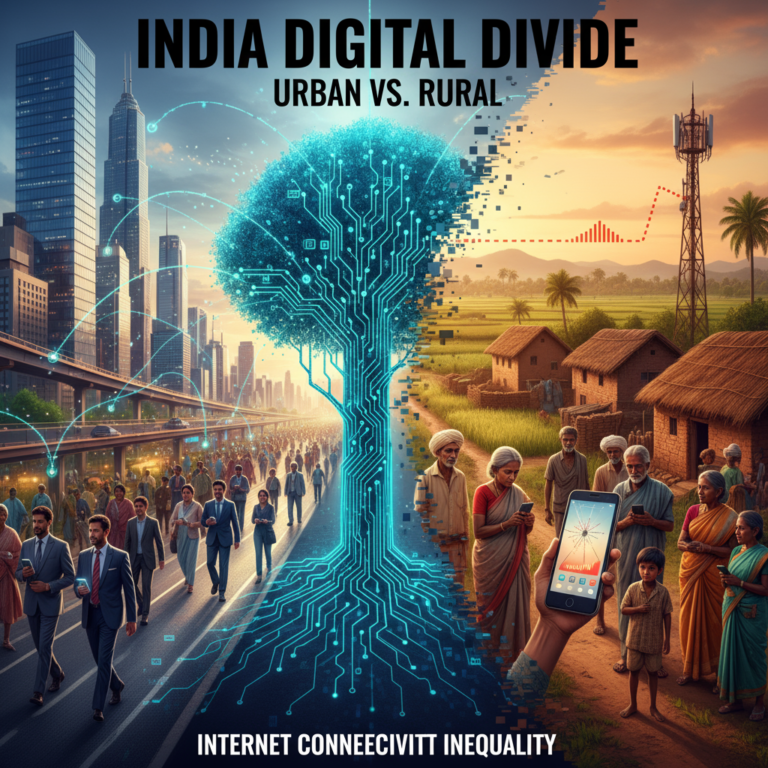

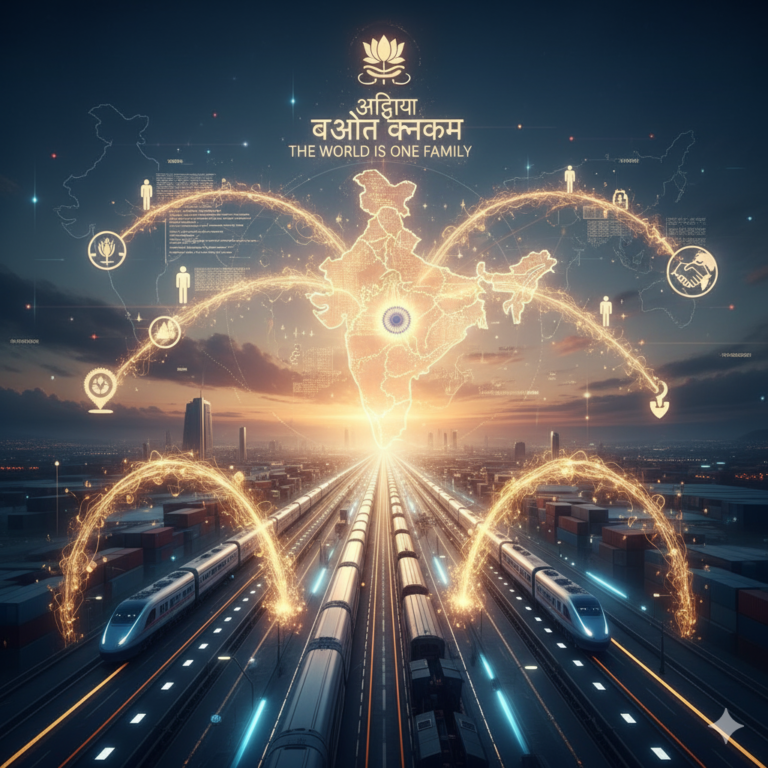

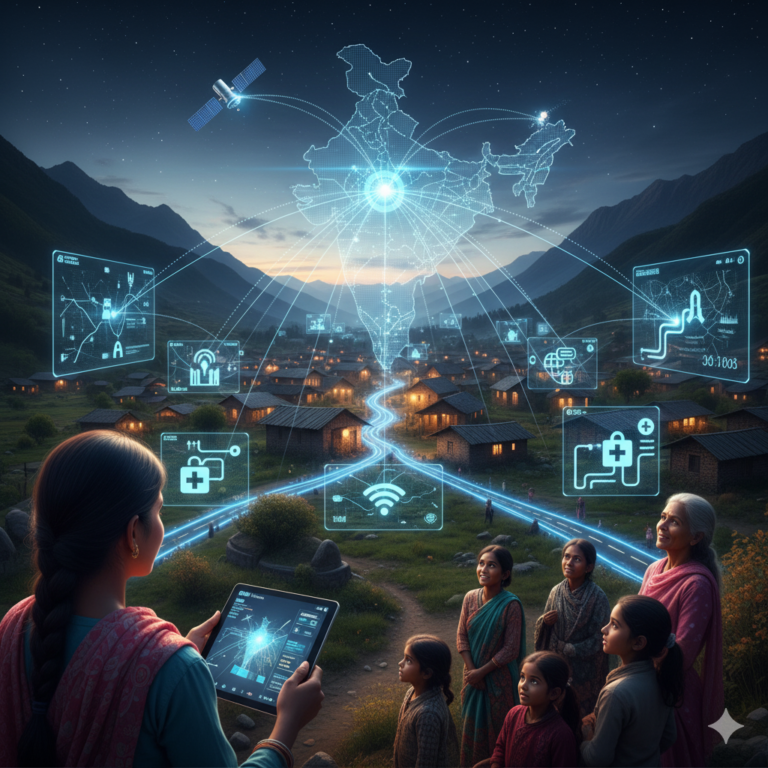
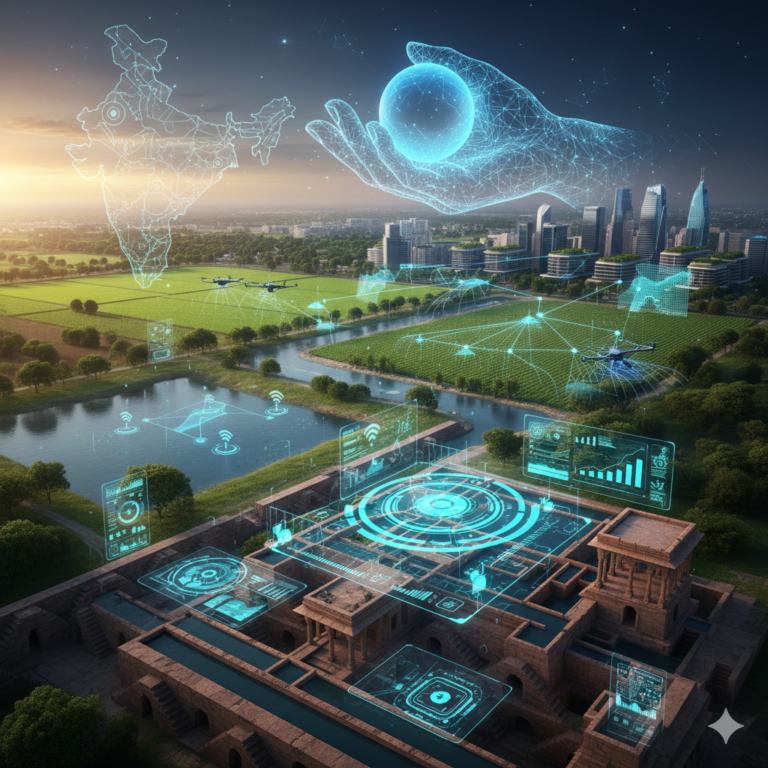
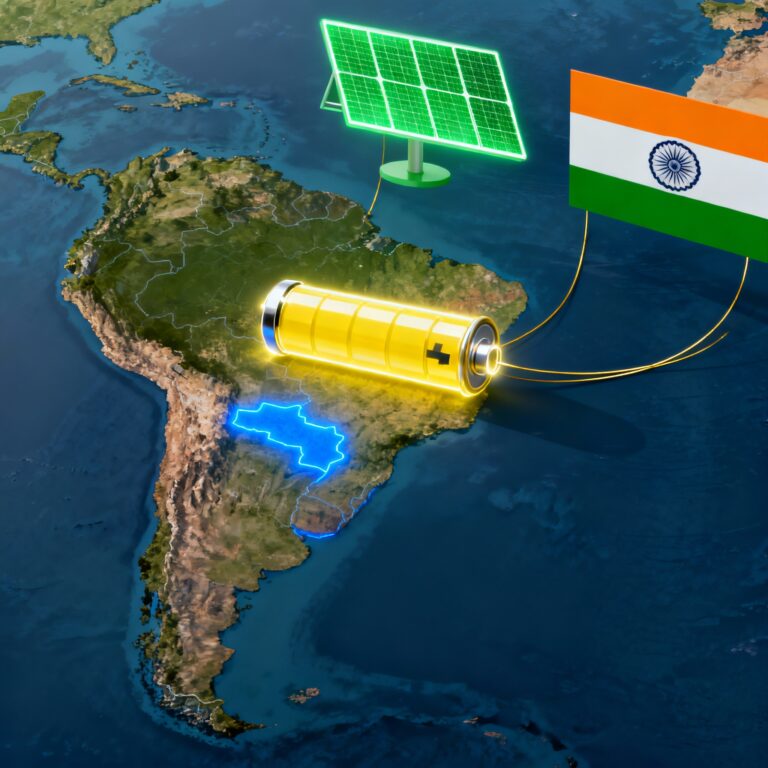
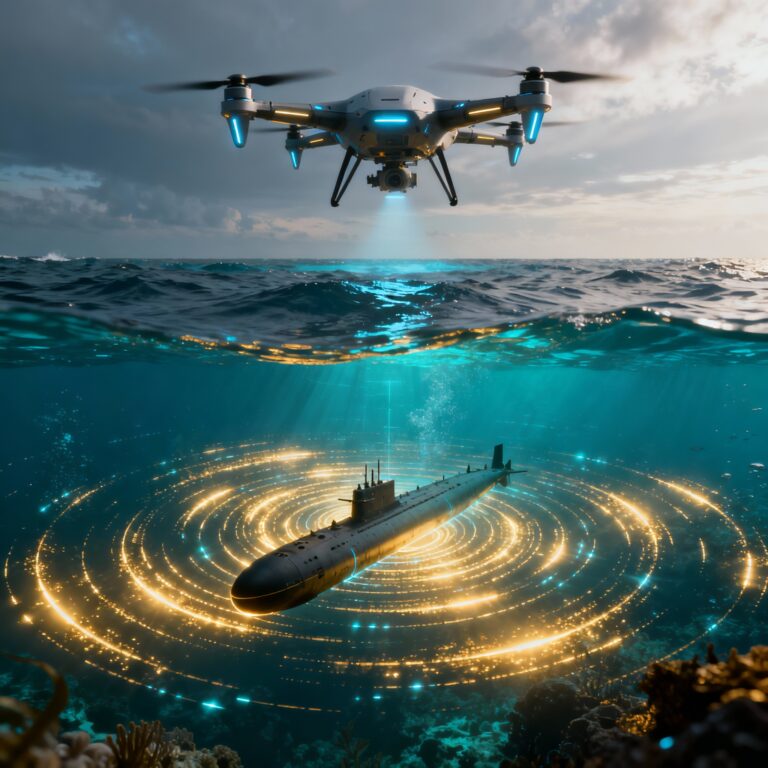
+ There are no comments
Add yours